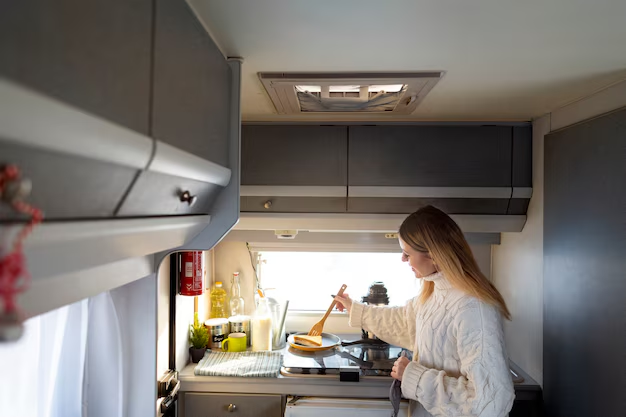Understanding Refrigerator Energy Consumption: How Many Running Watts Does a Refrigerator Use?
Refrigerators are a cornerstone of modern kitchens, preserving food and keeping it fresh. But have you ever wondered how much energy your fridge consumes? Understanding the running watts of a refrigerator is crucial for both optimizing energy use and making informed purchasing decisions. In this article, we will delve into the energy requirements of refrigerators, explore related topics, and offer practical insights for potential energy savings.
🤔 What Are Running Watts and Why Do They Matter?
Defining Running Watts
Running watts refer to the steady power consumption of an appliance while it is in operation. For a refrigerator, this is the energy it uses to keep its compartment cool and can vary based on several factors including design and age.
Importance of Knowing Running Watts
Understanding running watts is valuable for various reasons:
- Budget Planning: Knowing how much energy a refrigerator uses helps estimate its contribution to your electricity bill.
- Eco-Friendly Choices: Choosing energy-efficient models can significantly reduce your carbon footprint.
- Power Outages: In emergency situations, understanding running watts can be crucial if you plan to use a generator.
📊 Factors Influencing Refrigerator Energy Use
Size and Capacity
Generally, larger refrigerators consume more energy. The capacity of a refrigerator is directly proportional to its power needs because a bigger internal volume requires more energy to cool effectively.
Age and Condition
Older models are typically less energy-efficient than their modern counterparts. Technological advancements have equipped newer refrigerators with features that make them more energy-conserving.
Location and Environment
The ambient temperature around a refrigerator plays a role in its energy consumption. Units placed in warmer environments or near heat sources will use more energy to maintain internal temperatures.
Frequency of Use
Every time the door opens, warm air enters, and the refrigerator must use energy to cool back down. Frequent access increases energy use, while minimizing the number of times the door is opened can conserve power.
📈 Average Running Watts for Common Refrigerator Types
Compact Refrigerators
Compact units, often found in dorm rooms or offices, generally use between 80 and 160 watts. They are an excellent choice for smaller needs, though not as energy-efficient when scaled to store significant quantities.
Mid-Sized Refrigerators
Typically found in homes, mid-sized models operate around 150 to 400 watts. However, newer models with energy-efficient designs can sometimes operate on the lower end of that spectrum.
Large and Commercial Units
Large home or commercial-use refrigerators, which offer significant storage and advanced cooling technologies, demand more power, usually ranging from 400 to 1,000 watts.
🌿 Enhancing Refrigerator Energy Efficiency
Energy Star Ratings
Opting for appliances with an Energy Star rating ensures reduced power usage. These models are certified energy-efficient, helping consumers reduce electricity bills and environmental impact.
Proper Maintenance
Maintaining the coils, cleaning the gasket, and ensuring proper sealing are simple actions that can reduce unnecessary energy use. Regular maintenance checks also prolong appliance lifespan.
Optimal Temperature Settings
Keeping the refrigerator compartment between 37°F and 40°F (3°C to 4°C) is optimal for energy efficiency. The freezer should be maintained at 0°F (-18°C).
Smart Usage Tips
- Location Matters: Place the fridge in a cool, shaded area away from heat sources.
- Proper Organization: Avoid overpacking to allow air circulation.
- Minimal Door Opening: Reduce frequency and duration of door openings to maintain internal temperatures effectively.
🔋 Power Your Refrigerator with a Generator?
In emergencies or off-grid scenarios, you may need to power your refrigerator with a generator. Here's what you should know:
Starting Watts vs Running Watts
Most refrigerators require more power to start up—often 2-3 times their running watts. Make sure your generator can handle this initial surge.
Suitable Generators
Portable generators that offer 2,000 watts or more typically suffice for most refrigerators, accounting for both starting and running power needs.
Extended Use
When selecting a generator, take into account fuel type, noise levels, and duration of operation to ensure suitability for extended use.
🛠️ Energy-Saving Features to Look For
Whether you're in the market for a new refrigerator or optimizing an existing one, be on the lookout for these features:
- Adaptive Defrost Controls: Only defrosts as needed, saving energy.
- LED Lighting: More efficient than traditional lighting options.
- Climate Control Drawers: Keep specific compartments at optimal storage temperatures for various types of food.
- Smart Sensors: Automatically adjust settings based on usage patterns and external conditions.
✅ Key Takeaways: Maximizing Refrigerator Efficiency
Here’s a quick guide to help you make your refrigerator usage more efficient:
- 📏 Size Matters: Choose a refrigerator that fits your needs to avoid unnecessary energy use.
- 🌡 Correct Settings: Set your fridge and freezer to optimal temperatures.
- ⚒ Maintenance: Regularly clean coils and seals.
- 🏆 Energy Star: Prefer models with an energy efficiency certification.
- 🔄 Smart Adjustments: Implement adaptive defrost and utilize smart sensors.
- 🚪 Mind the Door: Reduce door openings to maintain optimal internal temperatures.
Implement these practical steps to promote energy efficiency and reduce electricity costs. Ensuring your refrigerator operates optimally not only saves money but also contributes to a more sustainable lifestyle.
Understanding the energy requirements of your refrigerator is key in making smart choices about appliance usage and selection. By optimizing these factors, you can enhance energy efficiency in your home, benefiting both the environment and your wallet.
